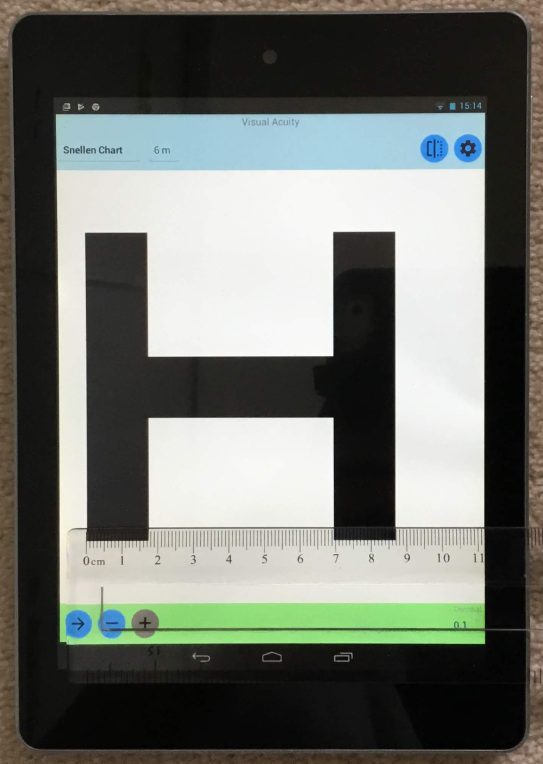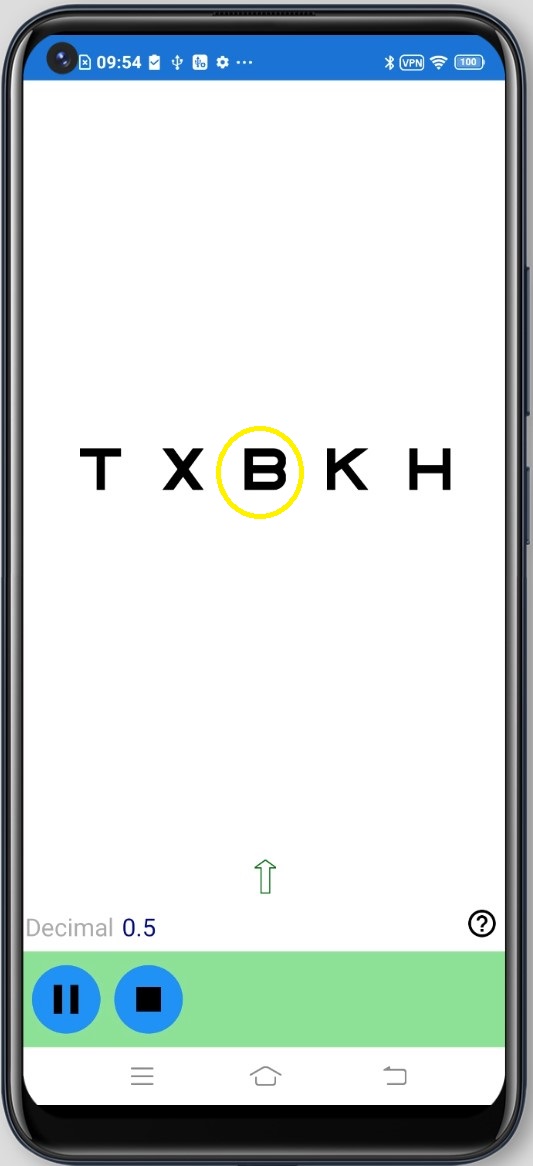Fonlow Eye Charts
This eye chart app is designed for children over 6, parents with young children, and general practitioners. It provides optically accurate optotypes, enabling precise measurement of distant visual acuity. By detecting nearsightedness or myopia early, users can take preventive measures and seek medical assistance in time to prevent pseudomyopia from developing into myopia or worsening existing nearsightedness.
Charts
- Snellen Chart, with C, D, E, F, H, K, N, P, R, U V and Z, as defined in BS 4274-1:2003
- Tumbling E Chart.
- Landolt C Chart
- ETDRS Chart, with the Sloan letters C, D, H, K, N, O, R, S, V, and Z
- HOTV Chart
- European-wide Chart, with the Sloan letters H, K, O, E, P, X, B, T, M and A, common to all three European alphabets (Latin, Greek, Cyrillic)
- Numbers
- Shapes
Scenarios
- "Doctor" and "Patient"
- Self-diagnosis with Mirror, convenient for telemedicine/telehealth when the patient is alone with a mirror on a wall.
- Self-diagnosis with a Bluetooth keyboard, convenient for telemedicine/telehealth when the patient is alone with a keyboard connected to the mobile device.
- Self-diagnosis within Arm's Reach
Predefined Test Distances
- 6, 5, 4, 3, and 2 meters
- 20, 15, 12, 10, and 6 feet
And a custom distance between 0.5m and 30m may be defined in Settings.
Remarks
Custom distance is handy for an arm-reach distance, ad-hoc distance in a GP's office, and a very long distance up to 30 meters for testing the eyesight of a top gun pilot.
- The letters and orientations of E or C ring are randomly shuffled. This makes memorizing an eye chart and cheating a vision test impossible.
Notations
- Decimal (0.50)
- Fraction (20/40)
- LogMAR (0.30)
- Fraction (5/10)
- Fraction (6/12)
- MAR (2)
- VAS or VAR (85)
All charts in any VA notation follow the LogMAR design recommended by the International Council of Ophthalmology (ICO) and BS 4274-1:2003 to address design flaws in original Snellen chart.
Modes
- Auto-scoring
- Manual
Remarks:
Testing for myopia takes several procedures and the first step is often to check distant visual acuity through a visual acuity chart. And the decrement of visual acuity may indicate the development of myopia.
Prevention is better than cure. According to American Academy of Ophthalmology, “A great first step to prevent or slow the progression of nearsightedness is to encourage your child to spend more time outdoors”, while “Light Exposure and Eye Growth in Childhood” published in investigative ophthalmology & visual science “provides the first evidence of a modest but statistically significant relationship between objectively measured daily ambient light exposure and eye growth in children, consistent with more light exposure resulting in slower axial growth of the eye. These findings indicate a role for ambient light exposure in the previously documented association between outdoor activity and myopia and provide evidence to support interventions aimed at increasing daily light exposure in order to slow childhood myopia progression”.
Disclaimer
While this app may replace Snellen Chart, E-Chart, C-Chart, ETDRS Charts and HOTV Chart in print, it cannot replace doctors and optometrists who carry out comprehensive eye exam for your basic eye health. Please visit optometrists regularly and seek help from medical professional at early signs of visual acuity problems.
The app does not test strabismus, amblyopia, esotropia, exotropia, hyperopia and astigmatism and which are common early vision conditions.
As Mentioned By:
- Visual Acuity Testing for Telehealth Using Mobile Applications (europepmc.org mirror) published in JAMA Ophthalmology indicates Visual Acuity Charts is the most accurate among 10 apps on iPhones being tested.
- Orthoptics Australia -- Telehealth Resources: Testing Vision & Eye Movements
- American Journal of Ophthalmology -- Teleophthalmology: Evaluation of Phone-based Visual Acuity in a Pediatric Population
- Children's Eye Care (PDF), Testing Kids Vision (Video)
- CHEO in Ottawa
- Specialized Pediatric Eye Care & Adult Strabismus in Beverly, MA
- UPMC Children's Hospital of Pittsburgh
- JohnSon City Eye Clinic
- More ...
Device Gallery
This app has been tested on various Android phones/tablets, iPhones and iPads to ensure optotypes are displayed on mobile screens accurately. And the localization includes Spanish/español, Hindi/मानक हिन्दी, Italian/italiano, Japanese/日本語, Korean/한국어, Portuguese/português, Russian/русский язык, Thai/ภาษาไทย, Simplified Chinese/ 简体 and Traditional Chinese/ 繁體.



